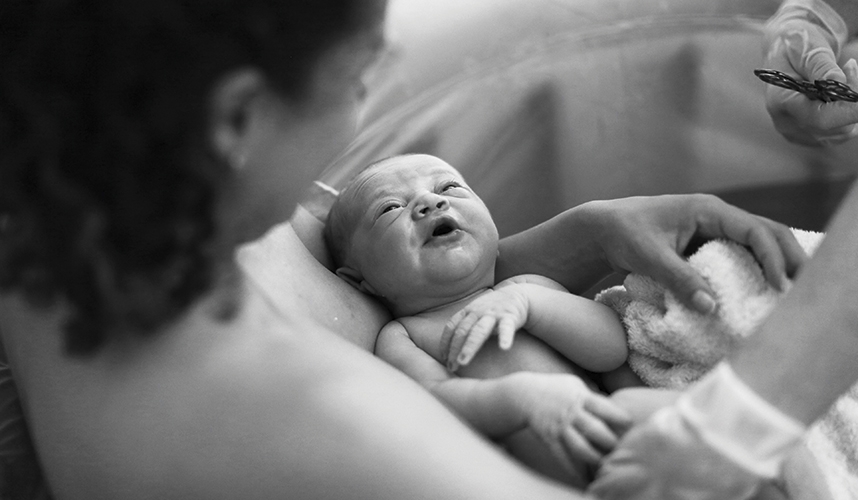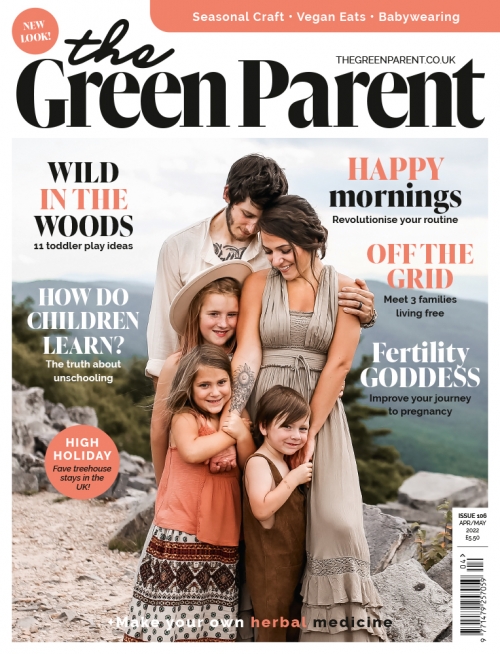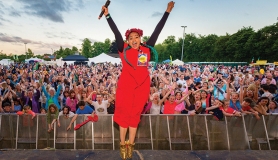Former journalist Natalie Meddings decided to train as a doula and active birth yoga teacher after a positive experience giving birth to her first child. The mother-of-three trained with the obstetrician Michel Odent and Janet Balaskas, the founder of the Active Birth Centre, and is the founder of peer support network Tell Me a Good Birth Story, which matches pregnant women with a “birth buddy” who can share their positive story.
Her latest book Why Home Birth Matters explores current evidence-based research on home birth, gives practical advice and includes first-hand accounts from women who have given birth at home.
How did you come to write Why Home Birth Matters?
I have always had a passion for helping the female body to function optimally. I have supported around 100 home births and have been noticing more and more interest in it. The thing I want to get away from is the idea that home birth is unconventional. What’s alternative is going to hospital! Birth in hospital is quite hard and giving birth at home is quite simple.
Your first child was born in a stand-alone NHS birth centre and your second and third were born at home – how did the experiences compare?
It wouldn’t have occurred to me to have a home birth with my first child, although in many ways the atmosphere of the birth centre was similar. I was already uncomfortable with hospitals and knew I needed privacy and calm. I’m not good with pain and I am a bit of a panicker, but I felt very safe and confident, and had such a lovely first birth that I thought if I could do it anyone can.
By the time of my second birth I was already training to be a doula and I don’t remember making a conscious decision to have a home birth. My own doula simply said “why don’t you see how you go?” which meant I could see it as a flexible open-ended arrangement and keep my options open.
Of my two home births, my second child was born in water and my third, who was a bigger baby, was born in the dark, in total quiet.
What are the main advantages of home birth?
Being in your own place means you don’t have to make decisions. You can switch out of rational thinking mode and move into your body. You are not inhibited and you are in control, and can more easily find out what you need and respond spontaneously. It’s much more biological than it is a choice. It’s what every woman needs – quiet, privacy, darkness, safety and the love and care of someone who knows what they are doing. Your body needs what it needs.
I don’t think people realise how managed you are in hospital, being timed, measured etc. At home you can be much freer – you can sit on the loo, go in the bath, sit on the sofa, whatever you want – so it’s very practical.
What holds people back from choosing home birth and how can that be overcome?
The National Institute for Clinical Excellence (NICE) guidelines state that “giving birth is generally very safe for both you and your baby, wherever you choose to have your baby”. Midwifes are supposed to explain your choices at your first antenatal appointment but in our society women are so unlikely to go for home birth because they lack knowledge and confidence.
The culture and fear means that home doesn’t seem like an option, but really it is a common sense, open-ended choice. It doesn’t have to be a hard and fast commitment. People don’t think about getting to hospital in the car, crawling along the corridor, lying on a triage bed and having someone root around inside you. You don’t have to have any of that at home.
Forty-five per cent of women who choose home birth do transfer to hospital for a first birth, but that also means that 55 per cent don’t. Why wouldn’t you give your body the best chance by having a midwife come to you to care for you, given that it is safe?
The book includes women talking about their experience of home birth, and your website Tell Me A Good Birth Story exists to share positive stories – why is this so powerful?
If we look back to the 1950s, most women gave birth at home with no interventions. Of course there weren’t as many options as there are today but the community was strong and women had confidence. They would have had understanding of what birth involved from being around aunts, sisters and neighbours, whereas our society really compartmentalises people.
In my classes I would see anxious to terrified women being completely changed by a single story. It works like a magic trick. When someone shares their home birth story people are completely gripped.
I wish birth was portrayed differently in the media and on television. There is so little information given about what birth is really like. It’s a wasted opportunity. How wonderful would it be to have a home birth version of One Born Every Minute?
Around two per cent of pregnant women choose a home birth – can you see it ever becoming more mainstream?
I think the fact that the rate is 10 per cent in certain areas proves that it is possible. It’s about education and information, and people hearing about the benefits. Things like the Positive Birth Movement are helping to get people talking.
I think that within the next five years we could see the rate go up to eight or nine per cent. Change is definitely afoot, and there is fertile ground for it to happen.
MORE INSPIRATION
READ: Why Home Birth Matters by Natalie Meddings is published by Pinter & Martin, priced £7.99.
SUPPORT: Sign up as a “birth buddy” or request one for yourself at tellmeagoodbirthstory.com
RESEARCH: Read the NICE guidelines about the care of women and their babies during labour and immediately after birth at bit.ly/2FkRJPI







